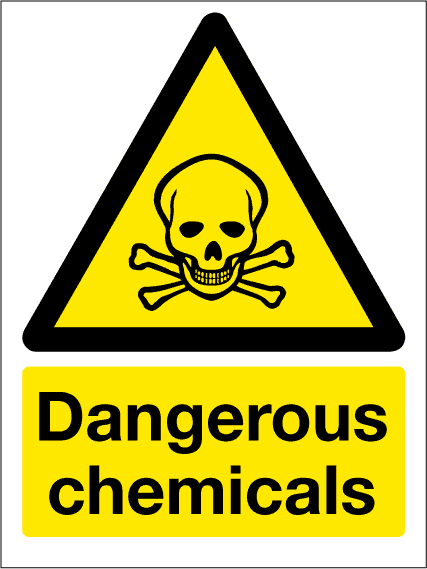Response to European Commission’s position on chemical mixtures

(Communication on the combination effects of chemicals; chemicals mixtures – see Note 1)
Brussels, 31 May 2012 – Health environmental and consumer groups have expressed deep concern at the Communication from the European Commission on people’s exposure to mixtures of chemicals, the so-called “cocktail effect”, especially as it relates to endocrine disrupting chemicals. (1)
“This Communication is a serious disappointment. It lacks any sense of urgency. Even though the Commission admits that it is not possible to do a proper assessment of the combination effects from different chemicals under the current structure of EU law, they are not proposing any changes to EU legislation,” says Lisette van Vliet, Senior Policy Advisor, Health & Environment Alliance (HEAL).
In December 2009, the EU Environmental Ministers expressed concerns that the health of European citizens might not be properly protected from the combined effects of hazardous chemicals, particularly those that can disrupt hormones. They asked the Commission to produce a report on how existing EU legislation deals with risks from mixtures, saying that further action was required “to address combination effects of chemicals”. (2)
An increasing number of scientific studies have suggested that endocrine disrupting chemicals (EDCs), particularly in combination, play a role in both chronic diseases, including hormone related cancers (such as breast and testicular cancer), obesity, diabetes, cardiovascular disease and also in reproductive problems, including low sperm counts and birth defects in baby boys, such as un-descended testes. (3)
“What is particularly worrying is that the foetus is being exposed to these chemicals – and foetal development is a uniquely sensitive developmental phase in human life. A recent study by the Danish Environmental Protection Agency showed that pregnant women have a number of different endocrine
disrupting chemicals in their bodies,(4) and these EDCs are known to be capable of passing through the placenta,” Ms. van Vliet says.
Daily, concurrent exposure to multiple chemicals, particularly endocrine disruptors, takes place through inhalation of pollutants in the air, absorption through the skin or ingestion through food and drink. (5)
A number of EU laws are aimed at protecting citizens from exposure to harmful chemicals. However, the laws usually assess each exposure individually as opposed to in combination. In addition, the risks from chemicals, such as pesticides, biocides and industrial chemicals, are assessed separately under different pieces of legislation. In reality, people and wildlife are exposed to many different chemicals at the same time. (5)
“We desperately need a plan for how and when the EU will tackle people’s exposures to harmful mixtures, especially because the rates of these expensive, painful and debilitating chronic diseases are continually rising,” said Francois Veillerette, spokesperson for Générations Futures, and President of Pesticides Action Network Europe. “This response is nowhere near the kinds of action we need to swiftly reduce people’s daily exposures to the chemical cocktail”.
The Communication proposes a platform for existing chemical monitoring data and improved coordination across the different Commission entities responsible for the various EU laws. It announces technical guidelines to promote consistency across different legislation that will not replace existing rules and a report by June 2015, but it does not propose any changes in risk assessment procedures to take mixtures into account nor any updates or adjustments of EU legislation.
>>>>>>>>>>>>>>>>>>>>>>>>>>>>>>>>>>>>>>>>>>>>>>>>>>>>>>>>>>>>>>>>>>>>>>>>
Contact:
Lisette van Vliet, Senior Policy Advisor, HEAL Health and Environment Alliance, Phone +32 2 234 3645 lisette@env-health.org
Yannick Vicaire, Policy Officer, Réseau Environment Santé, Mobile +33 608 755 015, res.yvicaire@gmail.com
Isabelle Pinzauti, Communication Officer, PAN Europe, Phone +32 497695842, isabelle@pan-europe.info
Francois Veillerette, Spokesperson, Générations Futures; President PAN Europe, Mobile +33 (0)6 81 64 65 58, mdrgf@wanadoo.fr
Alexandra Caterbow, Chemicals and Health Coordinator, Women in Europe for a Common Future, Phone +49 (89) 23 23 93 8-16, alexandra.caterbow@wecf.eu
Gwynne Lyons, Director, CHEM Trust, Phone +44 1603 507 363, Mobile +44 7944 422 898, gwynne.lyons@chemtrust.org.uk
Jerker Ligthart, Senior Chemicals Advisor, ChemSec – International Chemical Secretariat, Phone +46 (0)739-54 44 67, jerker.ligthart@chemsec.org
Lone Mikkelsen, Chemicals Policy Officer, Danish Ecological Council, Phone +45 33 18 19 34, lone@ecocouncil.dk
Mikael Karlsson, President, SSNC, Phone 46 703162722, mikael.karlsson@naturskyddsforeningen.se
Vito Buonsante, Health and Environment Lawyer, ClientEarth, Phone +32 (0)2 808 34 72, vbuonsante@clientearth.org














